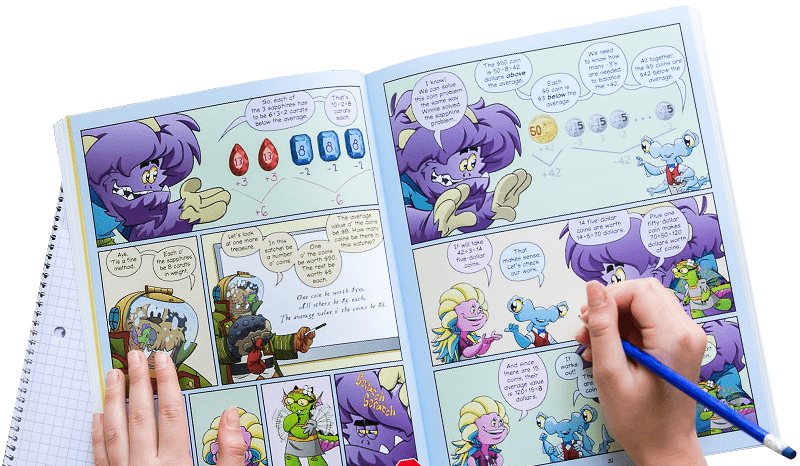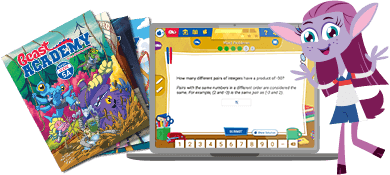Sierpiński Fold-Out
Make a beautiful fractal pop-up card by folding and cutting in a repeated pattern.
Instructions
Fold a piece of paper in half to form a rectangle, then cut halfway across the center of the rectangle, starting from the creased edge. It isn't important to be completely accurate in cutting, but you could use a ruler to measure the cuts if that helps. Fold the top half of the paper over to line up with the edge.

This next step can be a bit tricky the first time. Open up the paper and push the "folded-over" portion inside. Then re-crease. So far, your paper should look like a fairly boring pop-up card. If you open up the card, a small rectangular part pops out.
Now fold the paper closed again and imagine it as having two smaller rectangles. Repeat the process you just did with each of these. Cut halfway across the center of each rectangle, then fold over the top half of each. Open everything up, push the folded parts inside, and re-crease.

This is a good time to notice that, at first, you made 1 cut halfway through a rectangle. The second time through, you made 2 cuts, because there were two, smaller rectangles. Now repeat the process with 4 smaller rectangles. (Notice a pattern in these numbers?) Cut halfway and fold over the tops. Open everything up, push the folded parts inside, and re-crease.

After this set of cuts and folds, your Sierpiński Fold-Out is looking pretty good! You're welcome to stop here (younger scissor-users will certainly find the next step difficult if you decide to continue).
If you do another round of cuts and folds, this time with 8 rectangles, the results are pretty rewarding. Fold the paper closed again, make 8 small cuts (one for each little rectangle), open everything up, push the new folded parts inside, then re-crease.
Fearless crafters may wish to attempt another set of cuts and folds with 16 rectangles! (Good luck with that!)
Optionally, when you're done cutting, glue your Sierpiński Fold-Out to some paper for backing to form a card.


Don't forget: it's Beast Academy Playground, not Beast Academy Study Hall. Change the rules, be silly, make mistakes, and try again. The Variations and Learning Notes are here for you if you want to dive deeper, but not all of them apply to learners of every age. The most important thing is to have fun.
What do you think of this activity?
We're always looking to improve. Submit your feedback to us below.
- paper
- scissors
- glue
- shapes
- patterns
- counting
- wonder
- MP7
- MP8
- K.G.B.6
- 4.OA.C.5
- 4.G.A.3

Ready to level up?
Keep problem solving with Beast Academy’s full math curriculum for students ages 6–13. Check out our captivating comic book series and immersive online platform.
LEARN MOREBring problem-solving to your classroom
Keep your entire class engaged with a full book and online math curriculum, for students ages 6–13. 98% of teachers say they’re satisfied with Beast Academy.
LEARN MORE



Ready to level up?
Keep problem solving with Beast Academy’s full math curriculum for students ages 6–13. Check out our captivating comic book series and immersive online platform.
LEARN MOREBring problem-solving to your classroom
Keep your entire class engaged with a full book and online math curriculum, for students ages 6–13. 98% of teachers say they’re satisfied with Beast Academy.
LEARN MORE
Sign up to be notified when new videos are released.




















































